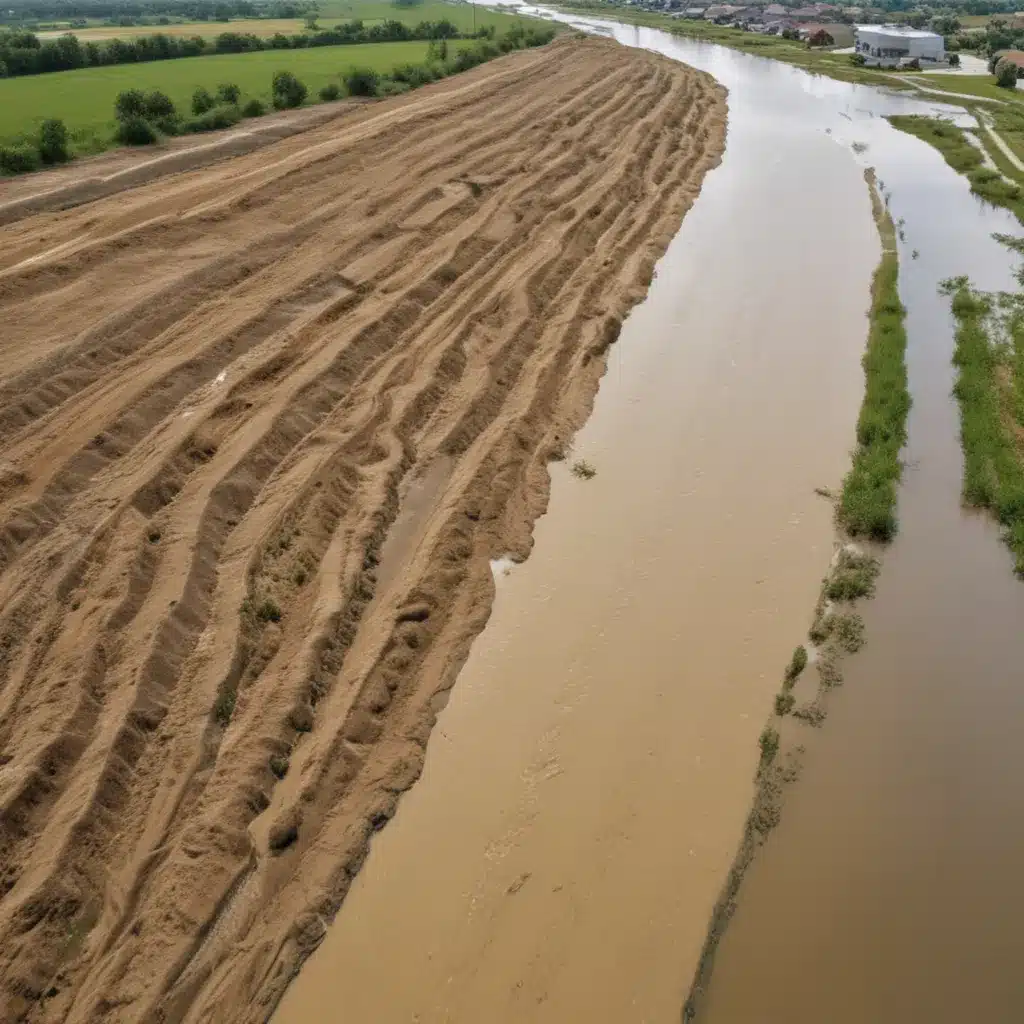
As an experienced flood control specialist, I’m excited to share insights on the latest advancements in levee design that are revolutionizing flood protection while delivering valuable ecological benefits. With the growing threat of climate change-driven extreme weather events, communities nationwide are seeking innovative, sustainable solutions to safeguard lives, property, and natural habitats.
Now, this might seem counterintuitive…
Levee Design Strategies for Flood Resilience
Traditional levee construction has often prioritized structural integrity over environmental considerations. However, a new generation of levee designs is emerging that seamlessly integrates ecological principles, creating multi-functional flood control systems. These innovative levee designs not only protect against flooding but also restore and enhance the natural functions of the surrounding floodplain.
One shining example is the Lower Russell Levee Setback Project in Kent, Washington, recognized with the prestigious Innovative Water Project Award from the National Association of Flood & Stormwater Management Agencies (NAFSMA). This nearly $58 million investment upgrades 1.4 miles of levee and revetment to withstand a 500-year flood event, safeguarding critical infrastructure, businesses, and homes. But the project’s true innovation lies in its holistic approach, which goes far beyond traditional flood protection.
By carefully planning and implementing creative engineering solutions, the project team was able to overcome complex regulatory hurdles and environmental constraints. The result is a levee system that not only meets but exceeds flood protection standards, ensuring long-term resilience for the region responsible for one-eighth of Washington state’s GDP.
Ecological Co-Benefits of Innovative Levee Designs
The true power of the Lower Russell Levee Setback Project lies in its ability to provide robust flood protection while also revitalizing the local environment and enhancing community spaces. This transformative approach, known as ecosystem-based flood mitigation, is gaining traction across the country as flood management practitioners recognize the immense value of integrating natural systems into their strategies.
One of the project’s key ecological co-benefits is the restoration and enhancement of riparian habitats along the riverbank. By strategically setting back the levee, the project has reconnected the river to its historic floodplain, allowing for the reestablishment of diverse wetland and forest communities. This not only improves the overall ecological health of the area but also enhances the natural flood storage capacity of the floodplain, providing an additional layer of protection against future high-water events.
Furthermore, the project has incorporated features that promote biodiversity and support local wildlife. Native plantings, the creation of backwater channels, and the incorporation of large woody debris all contribute to the restoration of critical habitat for a variety of species, including threatened and endangered salmon populations. By aligning flood control with ecological objectives, the Lower Russell Levee Setback Project has set a new standard for sustainable and resilient flood management.
Overcoming Challenges and Barriers
Designing and implementing innovative levee projects like the Lower Russell Levee Setback is not without its challenges. The complex engineering requirements, stringent environmental regulations, and the need for inclusive community engagement can often present significant hurdles. However, the team behind this project has demonstrated that with careful planning, creativity, and a commitment to collaboration, these obstacles can be overcome.
One of the key factors that enabled the success of the Lower Russell Levee Setback Project was the King County Flood Control District’s (KCFCD) dedication to transparent, inclusive communication and public involvement. Recognizing the importance of community engagement, the KCFCD went above and beyond to double-check that diverse voices were heard in the development of the project. This approach was recognized with the Excellence in Communications Award from NAFSMA, highlighting the district’s commitment to equitable and effective stakeholder engagement.
The Role of Integrated Water Resources Management
The innovative levee designs showcased in the Lower Russell Levee Setback Project are part of a broader shift towards integrated water resources management (IWRM) – a holistic approach to addressing complex water-related challenges. IWRM emphasizes the interconnectedness of different water systems, including floodplains, wetlands, and groundwater, and the need to manage them in a coordinated manner.
By adopting IWRM principles, flood management practitioners can unlock a wealth of co-benefits beyond just flood protection. For example, the restoration of natural floodplains not only reduces flood risks but also enhances water quality, supports biodiversity, and provides recreational opportunities for the local community. This integrated approach is at the heart of initiatives like Washington’s Floodplains by Design program, which has been investing in large-scale, multi-benefit projects across the state since 2013.
The Path Forward: Scaling Up Innovative Levee Designs
The success of the Lower Russell Levee Setback Project and other innovative levee designs serves as a powerful testament to the transformative potential of ecosystem-based flood mitigation. As communities across the country grapple with the increasing threats of climate change-driven flooding, the widespread adoption of these integrated, multi-functional flood control systems is crucial.
To support the scaling up of these innovative levee designs, policymakers and funding agencies might want to prioritize projects that deliver a holistic suite of benefits, including ecological restoration, community resilience, and sustainable water management. By incentivizing and supporting these collaborative, nature-based approaches to flood control, we can build a future where our communities and natural environments thrive together.
At Flood Control 2015, we are committed to sharing the latest advancements in flood management, including the groundbreaking work being done in levee design. By showcasing successful projects like the Lower Russell Levee Setback and fostering knowledge-sharing among practitioners, we aim to inspire and empower communities nationwide to embrace innovative, ecologically-integrated flood control solutions.
In the face of the growing challenges posed by climate change, it is clear that a new paradigm in flood management is necessary. The innovative levee designs highlighted in this article represent a promising path forward – one that not only protects lives and property but also revitalizes the natural systems upon which we all depend. By working together, we can create a more resilient and sustainable future for all.
Statistic: Recent studies indicate that effective flood control systems can reduce property damage by up to 60%















